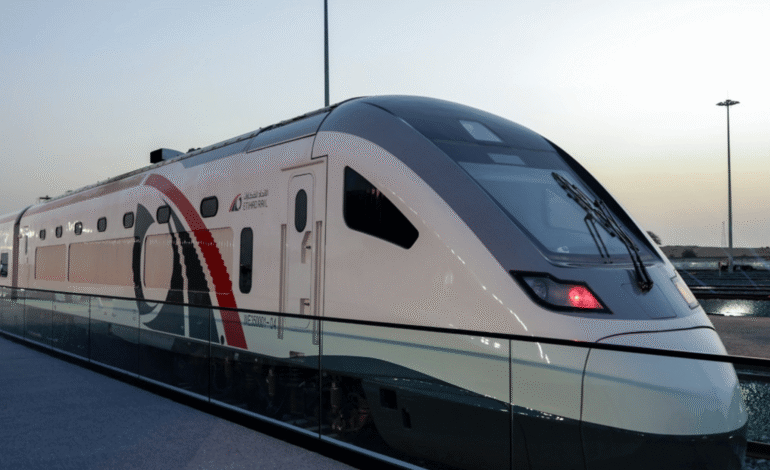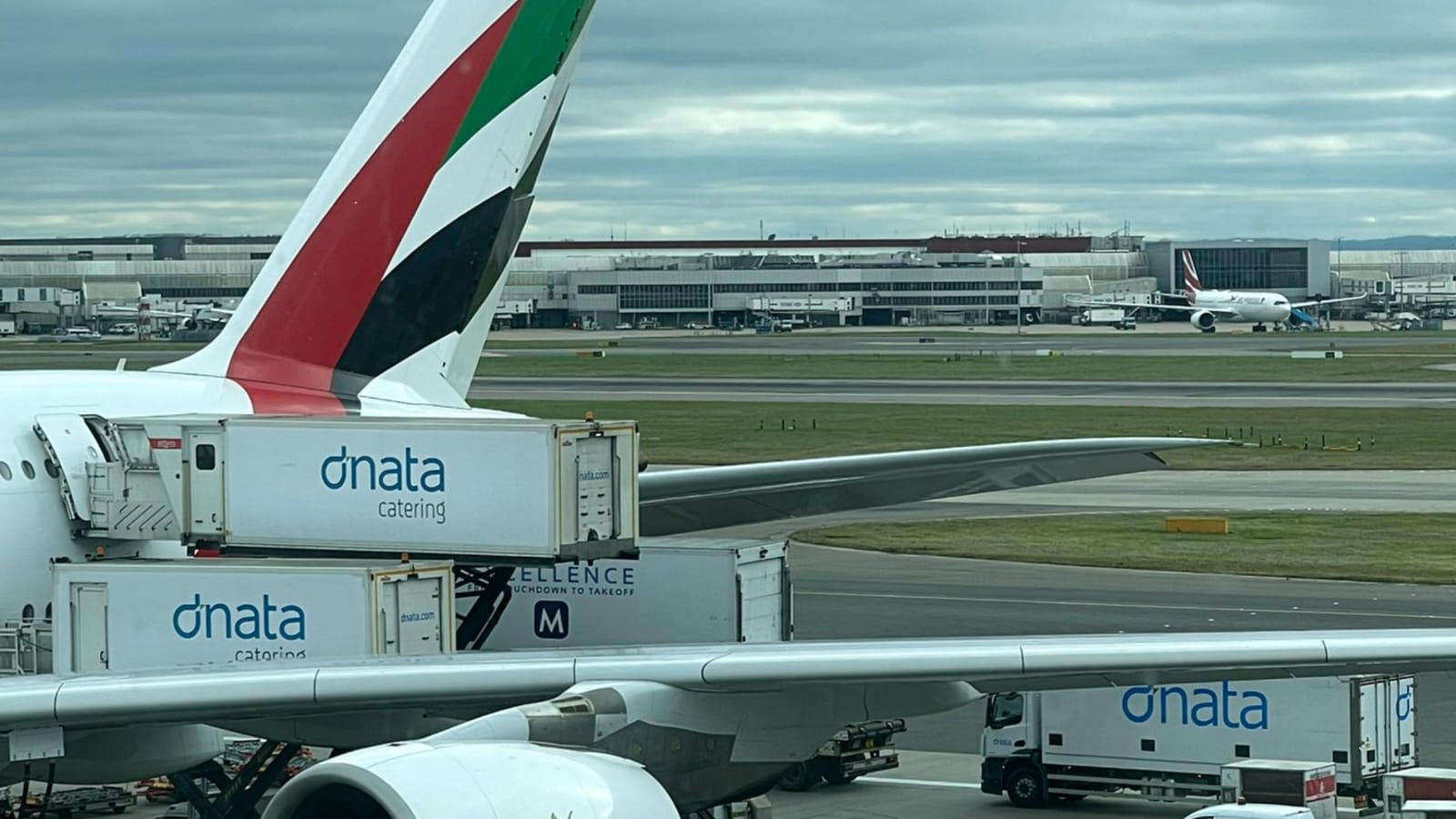Etihad Rail 2026: High-Speed Train to Revolutionize UAE Travel

The UAE National Rail Network is poised to transform how people travel across the Emirates with the launch of Etihad Rail’s passenger train service in 2026. This landmark project, part of the UAE’s ambitious 2030 transport vision, promises to slash travel times, reduce road congestion, and promote sustainable travel. With trains reaching speeds of up to 200 km/h and a high-speed link between Abu Dhabi and Dubai cutting travel to just 30 minutes, Etihad Rail is set to redefine mobility in the UAE. This article explores the details of this revolutionary project, its impact on tourism, economic growth, and environmental sustainability, and why it’s a game-changer for residents and visitors alike.
A Milestone in UAE’s Transport Infrastructure
The Etihad Rail passenger service, launching in 2026, marks a significant step in modernizing the UAE’s transport infrastructure. The project aligns with the UAE’s strategic goal to connect all seven emirates through a seamless railway network, enhancing connectivity and reducing reliance on road travel. By offering a fast, efficient, and eco-friendly alternative to cars, Etihad Rail aims to ease traffic congestion on major highways, particularly between bustling hubs like Dubai and Abu Dhabi. The initiative is expected to contribute AED 145 billion to the UAE’s GDP over the next five decades, making it a cornerstone of economic development.
Why Etihad Rail Matters
The UAE railway network is more than just a transport project—it’s a catalyst for social cohesion, tourism growth, and sustainable development. By linking 11 key cities from Al Sila in Abu Dhabi to Fujairah on the east coast, Etihad Rail will make travel more accessible, fostering stronger ties between communities. Keywords like Etihad Rail 2026, UAE high-speed train, and sustainable transport UAE are critical for those researching this transformative initiative.
High-Speed Trains: Speed, Comfort, and Sustainability
The Etihad Rail passenger trains are designed to operate at speeds of up to 200 km/h, with a dedicated high-speed rail connecting Abu Dhabi and Dubai at 350 km/h, reducing travel time to just 30 minutes. For instance, a journey from Abu Dhabi to Dubai will take 57 minutes, while Abu Dhabi to Fujairah will be around 105 minutes. These trains, accommodating up to 400 passengers, will feature modern amenities such as Wi-Fi, entertainment systems, charging points, and a variety of food and beverage options, ensuring a comfortable and enjoyable travel experience.
Eco-Friendly Travel for a Greener UAE
A key highlight of the Etihad Rail project is its commitment to environmental sustainability. By offering an all-electric transport option, the railway is expected to reduce greenhouse gas emissions by more than 2.2 million tonnes annually, equivalent to removing 375,000 vehicles from UAE roads. This aligns with the UAE’s net-zero emissions goal by 2050, making Etihad Rail a pivotal player in the nation’s sustainable transport strategy.
Passenger Amenities and Ticketing Innovations
Each Etihad Rail passenger train will boast stylish interiors, comfortable seating in first, business, and economy classes, and advanced features like infotainment systems, ample legroom, and air-conditioned coaches. The trains’ aerodynamic design enhances efficiency, while electric doors and TV screens displaying real-time travel information add convenience. In a groundbreaking move, passengers will be able to use nol cards for ticketing, thanks to a partnership between Etihad Rail and the Roads and Transport Authority (RTA), ensuring seamless integration with existing public transport systems.
Strategic Stations Across the UAE
The Etihad Rail network will span approximately 1,200 kilometers, connecting 11 cities across all seven emirates. Key stations include:
- Abu Dhabi: Stations at Reem Island, Saadiyat Island, Yas Island, and Zayed International Airport.
- Dubai: Stations near Jumeirah Golf Estates, Al Maktoum International Airport, and Al Jaddaf.
- Sharjah: A station near University City and Sharjah Airport.
- Fujairah: A station in the Sakamkam area.
- Other key stops: Al Sila, Al Ruwais, Al Mirfa, Al Dhaid, and Ras Al Khaimah.
These stations are strategically located to integrate with metros, buses, and taxis, ensuring seamless connectivity for passengers. The Jumeirah Golf Estates station in Dubai, developed in collaboration with Wasl, highlights the project’s integration with major real estate developments. Future expansions will connect more cities, further enhancing the network’s reach.
Future Expansion: The Hafeet Rail Project
Beyond the UAE, Etihad Rail is set to expand regionally through the Hafeet Rail project, a 303-kilometer railway connecting Sohar in Oman to Al Wathba in Abu Dhabi. This joint venture between Etihad Rail, Oman Rail, and Mubadala Investment Company will allow passenger trains to travel at 200 km/h, reducing travel time from Abu Dhabi to Sohar to 100 minutes and Sohar to Al Ain to 47 minutes. This cross-border link will enhance regional connectivity, boost trade, and promote tourism between the UAE and Oman.
Economic and Social Impact
The Etihad Rail passenger service is expected to have a profound impact on the UAE’s economy and society. By 2030, the network is projected to serve over 36.5 million passengers annually, driving tourism, facilitating business travel, and strengthening socioeconomic ties between emirates. The high-speed rail between Abu Dhabi and Dubai will pass through key tourist attractions like Yas Island and Saadiyat Island, making it easier for visitors to explore the UAE’s cultural and entertainment offerings.
Boosting Tourism and Economic Growth
The rail service will position the UAE as a leading logistics hub, supporting the movement of people and goods. By connecting major ports like Khalifa Port, Jebel Ali Port, and Fujairah Port, Etihad Rail’s freight operations—already operational since 2023—enhance trade capabilities. The passenger service will further amplify this by making travel more accessible, encouraging domestic tourism, and attracting international visitors. The projected AED 145 billion contribution to the UAE’s GDP underscores the project’s economic significance.
Supporting UAE’s 2030 Vision
The Etihad Rail project aligns with the UAE’s 2030 transport vision, which emphasizes smart, sustainable, and efficient mobility solutions. By reducing travel times and carbon emissions, the railway supports the UAE’s goals of fostering connected communities and achieving environmental sustainability. The project reflects the UAE’s commitment to innovation and progress, as highlighted by H.H. Sheikh Mohammed bin Rashid Al Maktoum, who described Etihad Rail as a “vital economic artery” for the nation’s future.
Leadership and Commitment to Excellence
The Etihad Rail project has received strong support from UAE leadership, with figures like H.H. Sheikh Hamdan bin Zayed Al Nahyan and H.H. Sheikh Mohammed bin Rashid Al Maktoum closely monitoring its progress. During a recent journey from Dubai to Fujairah, Sheikh Mohammed praised the project’s economic, social, and developmental impact, emphasizing its role in building an integrated transport network. H.E. Shadi Malak, CEO of Etihad Rail, has led the project with a focus on efficiency, quality, and operational readiness, ensuring the railway meets global standards.
A New Era of Travel in the UAE
The Etihad Rail passenger service, launching in 2026, is set to revolutionize travel in the UAE, offering fast, sustainable, and comfortable transport across 11 cities. With high-speed trains, modern amenities, and seamless public transport integration, Etihad Rail will enhance mobility, boost tourism, and support the UAE’s net-zero emissions goal. As the UAE continues to invest in innovative infrastructure, this project stands as a testament to its vision for a connected, prosperous, and sustainable future. Stay informed about Etihad Rail 2026 and prepare for a new era of UAE travel.







